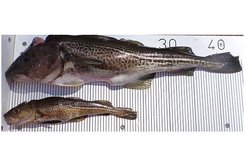Measuring species traits for biodiversity policy goals
Management of global biodiversity requires up-to-date, reliable, comparable, and repeated biodiversity data. Such monitoring is achieved on a global level by using Essential Biodiversity Variables. In a new perspective paper in Nature Ecology & Evolution, biodiversity researchers show how trait variability within species can be incorporated in Essential Biodiversity Variables. Including such trait variability will enable the assessment of how organisms respond to global change. This information is also crucial for international policy goals on biodiversity, according to the authors, among them iDiv researchers Jens Kattge from MPI-BGC, Nadja Rüdiger and Laetitia Navarro.

In order to understand how biodiversity is changing worldwide, it needs to be monitored with common units of measure at different locations. To establish such common units is a central goal of GEO BON, the Group On Earth Observations Biodiversity Observation Network. About five years ago, GEO BON has initiated the concept of Essential Biodiversity Variables (EBVs) to derive globally coordinated measurements that are critical for detecting and reporting biodiversity change. Just like the Essential Climate Variables, EBVs are constructed from various sources of data and constitute the minimum set of information needed to assess biodiversity change through time. EBVs are also the building blocks of indicators that can be used to measure the achievement of conservation policies and targets. As such, EBVs play an important role in biodiversity related policy decisions.
Species traits
A classical measure of biodiversity is the number of species at a given location. To get a better picture, however, researchers need to complement species numbers with other measurable aspects of biodiversity, e.g. the variation of traits within a given species. As an example, size is such a variable trait within a taxonomic unit. It describes a specific characteristic of plants, animals or other organisms that can vary within a population between individuals and also between different populations. It can vary with time, in particular in response to environmental change.
The recent publication in Nature Ecology and Evolution, authored by a group of more than twenty scientific experts, describes the requirements for developing the EBV class ‘Species Traits’. It can cover measurable variations in, e.g., phenology, morphology, reproduction, physiology or migratory behaviour. The concept results from a workshop in March 2017 where three researchers of the German Centre for Integrative Biodiversity Research (iDiv), Jens Kattge, Nadja Rüger and Laetitia Navarro met with other international experts.
W. Daniel Kissling, lead author of the paper and researcher at the University of Amsterdam says: ‘Currently there is no detailed framework for the empirical derivation of most EBVs. In our paper, we provide a conceptual framework with practical guidelines for building global, integrated and reusable EBV data products of species traits. This facilitates the monitoring of intra-specific trait changes in response to global change and human pressures, with the aim to use species trait information in national and international policy assessments.’
Co-author Jens Kattge, group leader at the Max Planck Institute for Biogeochemistry in Jena and researcher at iDiv, leads the recently established GEO BON working group on species traits. He adds: “So far species traits are successfully used in local biodiversity assessments: reduced size of mature individuals in the catch of fish and in the harvest of trees indicates overexploitation of these natural resources; reduced foliation and leaf nutrient concentration indicates forest stress, e.g. due to acid rain; changes of bird migration patterns and plant phenology indicate species responses to climate change.”
„This publication is an important milestone for GEO BON as, until recently, we didn’t have a dedicated group working on the development of the Species Traits EBVs. Now the group is set up and can build on the paper to define its roadmap“ says Laetitia Navarro, Executive Secretary at GEO BON and researcher at iDiv and the Martin Luther University Halle-Wittenberg, and adds: „Understanding how species traits might vary, in space and time, and when populations and ecosystems are confronted with human pressure, is also important for our own well-being since those traits can be directly linked to several ecosystem services.“
Biodiversity policy
The international research team assessed the societal relevance of species traits and highlighted their underrepresentation in current international biodiversity change indicators. These indicators are used to assess policy targets at a global scale, such as the Aichi Biodiversity Targets set by the Convention for Biological Diversity. Kissling: “I was surprised that there is such a lack of species trait information in in these international policy assessments of biodiversity change. We outline the steps needed for data-intensive science and effective global coordination to advance the inclusion of species trait information into indicators of biodiversity change, and how collected trait data can be shared in an open and machine-readable way.”
Making biodiversity data available for policy assessments requires substantial financial and in kind investments from universities, research infrastructures, governments, space agencies and other funding bodies. As a positive example for such support, the ground-breaking workshop had been organized within the H2020 project GLOBIS-B “GLOBal Infrastructure for Supporting Biodiversity research” funded by the European Commission (http://www.globis-b.eu/). Kissling emphasizes: “The operationalization requires not only more funding, but also a cultural shift towards more openness, interoperability and reproducibility within the broader science community.”
